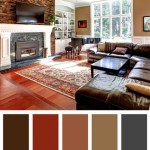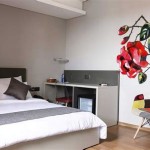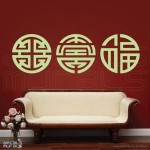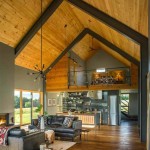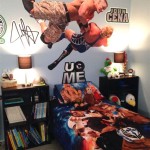Decorating Ideas for Small Formal Dining Rooms
Formal dining rooms, even in smaller spaces, can exude elegance and functionality with thoughtful design. This article explores various decorating strategies to maximize space and create a welcoming atmosphere for special occasions and everyday meals.
Space Optimization Strategies
One of the primary considerations for a small formal dining room is efficient space utilization. Choosing furniture scaled appropriately for the room's dimensions is crucial. A round or oval dining table often works well in compact spaces, allowing for easier movement and conversation flow compared to a rectangular table. Extending tables offer flexibility for larger gatherings while conserving space when not in use.
Selecting chairs that complement the table without overwhelming the room is equally important. Armless chairs or chairs with slender profiles can create a less cluttered appearance. Utilizing benches against a wall can also provide seating while maximizing floor space.
Creating an Illusion of Spaciousness
Several design techniques can visually expand a small dining room. Mirrors are a classic tool for creating an illusion of depth. A large mirror strategically placed on a wall can effectively double the perceived size of the room. Reflective surfaces on furniture, such as a mirrored sideboard or console table, can also contribute to this effect.
Light colors on walls, ceilings, and even furniture can make a room feel more open and airy. Opting for lighter shades of paint or wallpaper, particularly in cool tones, can visually expand the space. Maintaining a consistent color palette throughout the room further enhances this effect.
Maximizing natural light is another key strategy. Keeping window treatments minimal or using sheer curtains allows ample light to enter, creating a brighter and more spacious feel. Adding strategically placed mirrors can further amplify the natural light within the room.
Focal Points and Accent Pieces
Creating a focal point within the dining room adds visual interest and draws attention away from the room's size. A statement chandelier can serve as a captivating centerpiece, adding a touch of elegance and drama. Artwork, such as a large painting or a series of prints, can also create a focal point on a prominent wall.
Accent pieces can enhance the room's character and style. A decorative rug under the dining table can define the space and add warmth. Cushions on the dining chairs can introduce color and texture. Carefully chosen accessories, such as vases, candlesticks, or decorative bowls, can personalize the room and reflect individual style.
Storage Solutions
Incorporating clever storage solutions is essential in a small dining room. A sideboard or buffet can provide valuable storage for tableware, linens, and other dining essentials. Built-in shelving or cabinets can maximize vertical space and keep items organized. Utilizing wall-mounted shelves can also free up floor space while displaying decorative items.
Utilizing vertical space for storage is particularly beneficial in smaller rooms. Tall, narrow cabinets or shelving units can provide ample storage without overwhelming the space. Consider incorporating storage within the dining table itself, such as drawers or a hidden compartment, for frequently used items.
Choosing the Right Lighting
Lighting plays a critical role in setting the mood and ambiance of a dining room. A layered lighting approach is often recommended. Ambient lighting provides overall illumination, while task lighting focuses on specific areas, such as the dining table. Accent lighting highlights decorative features and adds visual interest.
A dimmer switch allows for adjustable lighting levels to suit various occasions. For formal dinners, dimmed lighting creates a more intimate atmosphere, while brighter lighting is suitable for everyday meals. Consider using different types of lighting fixtures, such as a chandelier, wall sconces, and table lamps, to create a layered and dynamic lighting scheme.
Decorative Elements and Styling
The overall aesthetic of the dining room can be enhanced through carefully chosen decorative elements. Textiles, such as tablecloths, napkins, and placemats, can add texture, color, and pattern. Selecting textiles that complement the room's color scheme and style creates a cohesive and visually appealing space.
Decorative accents, such as artwork, mirrors, and decorative objects, can personalize the room and reflect individual style. Fresh flowers or greenery can add a touch of nature and vibrancy to the space. Choosing decorative elements that complement the room's overall theme enhances its visual appeal and creates a welcoming atmosphere.
By implementing these design strategies, individuals can transform even the smallest formal dining room into a stylish and functional space for both special occasions and everyday enjoyment.

Before After Formal Dining Room Ideas Decorilla

10 Formal Dining Room Ideas From Top Designers

10 Formal Dining Room Ideas From Top Designers

Laundry Room Update Home Decor Designs By Jeana Luxury Dining Glam Elegant

25 Formal Dining Room Ideas Design Photos Wainscoting Elegant Luxury

How To Decorate A Dining Room In 7 Steps Buffie S Home Decorating

Add On Window Panes Dining Room Wall Decor Design Small

Before After Formal Dining Room Ideas Decorilla

10 Formal Dining Room Ideas From Top Designers

85 Best Dining Room Ideas Designer


